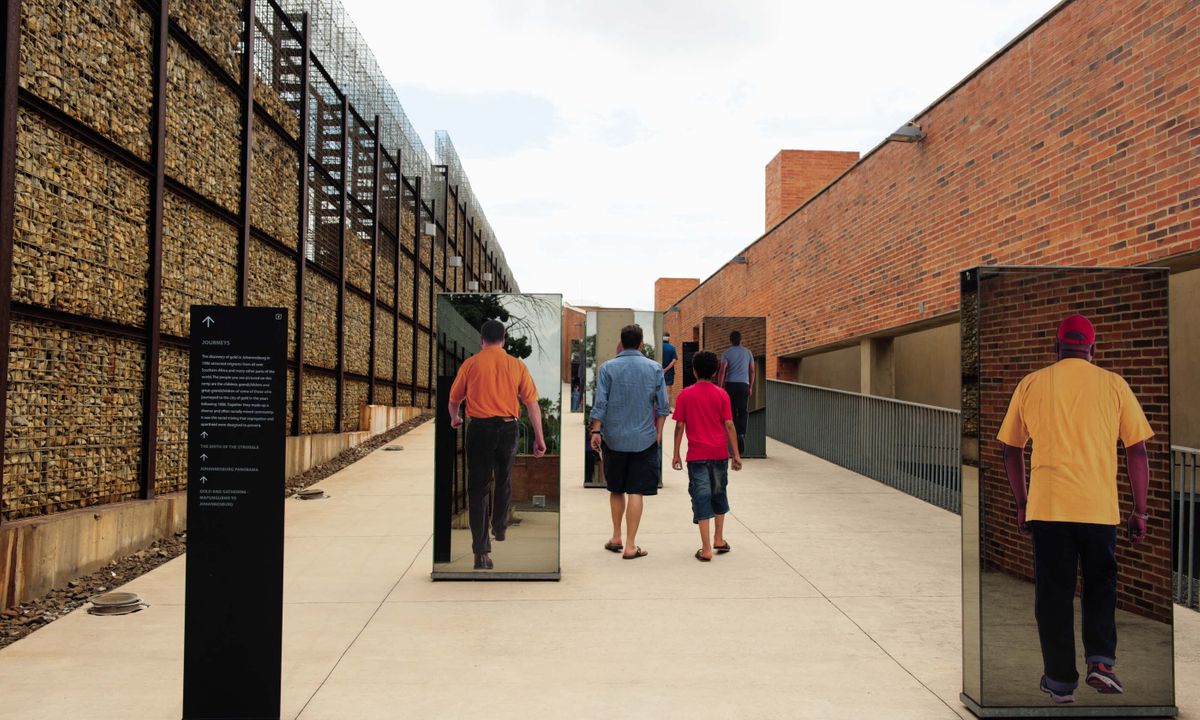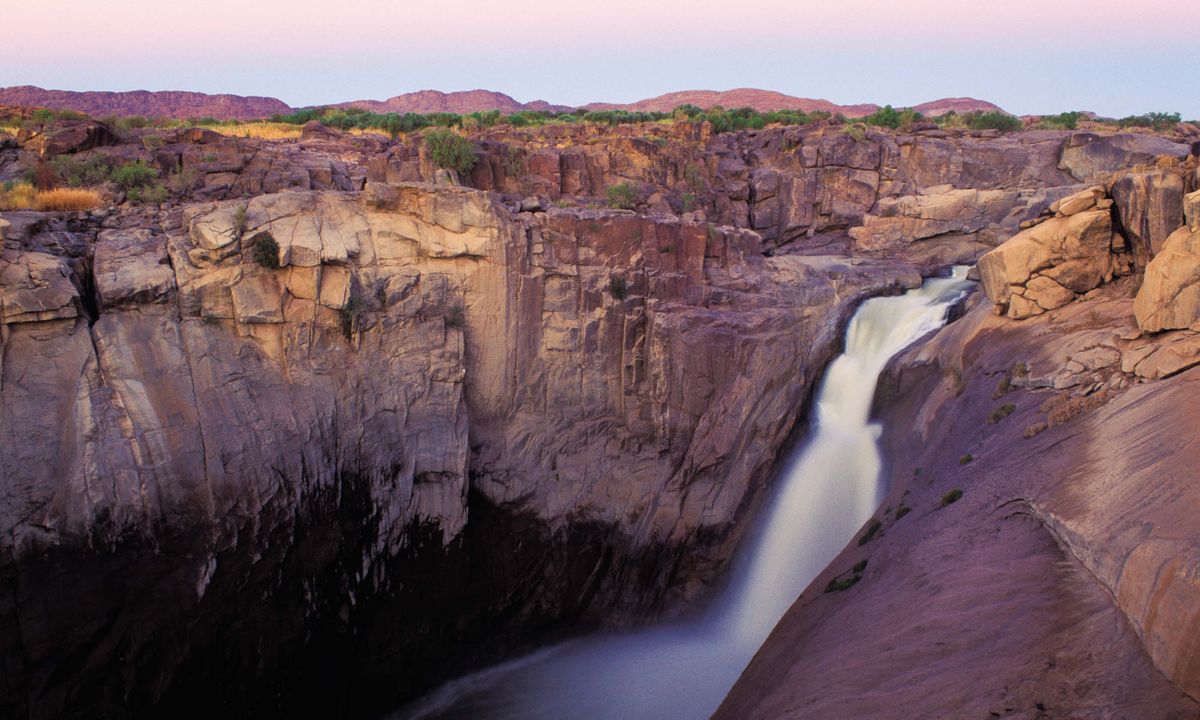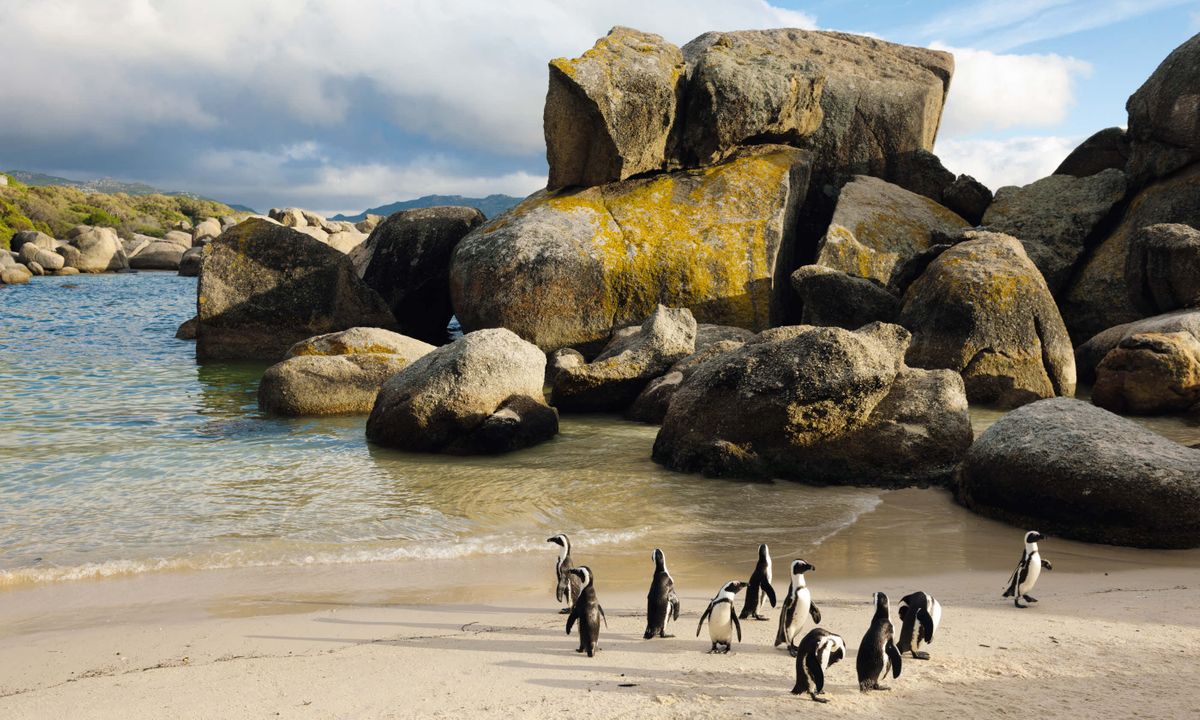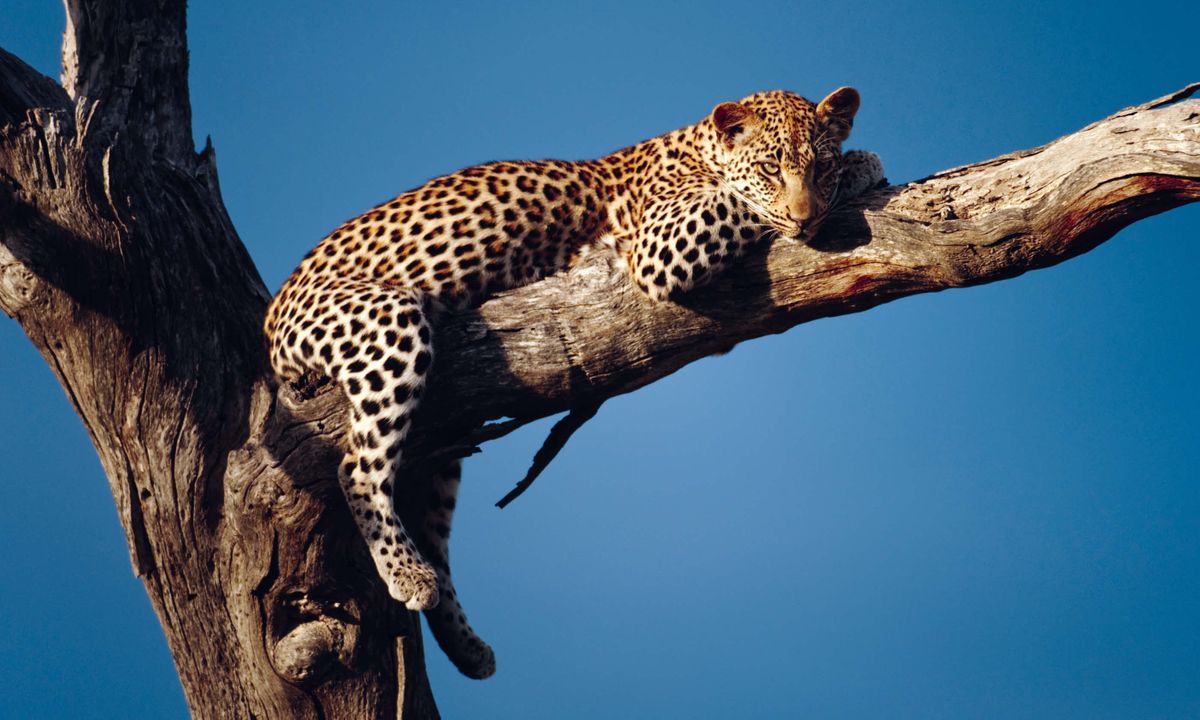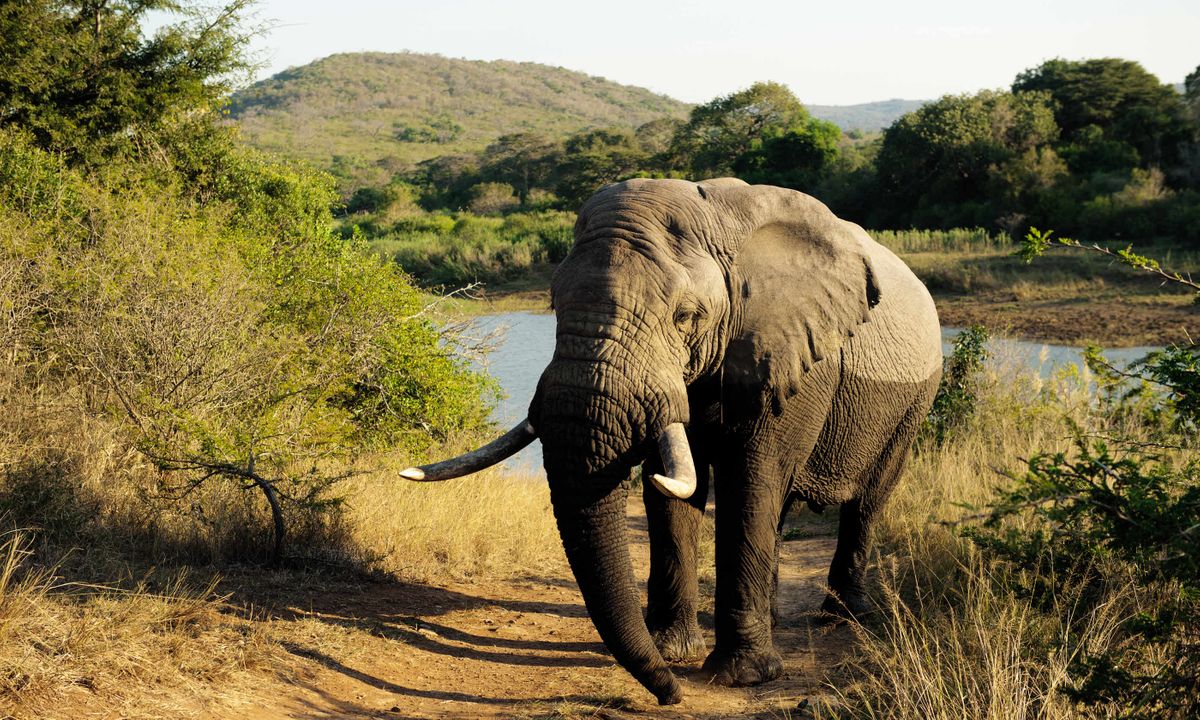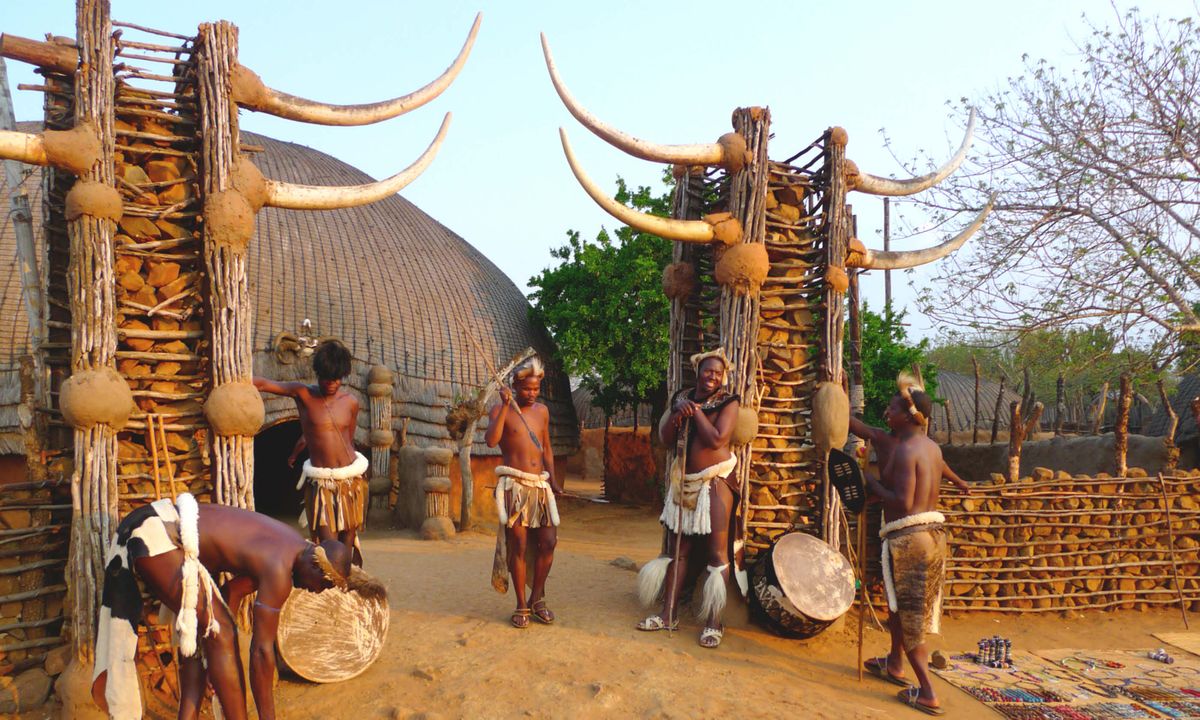The reporting of this story was made possible by a fellowship from the International Women's Media Foundation Great Lakes Fellowship (IWMF).
Nine thousand miles away from Trump Tower and Hillary Clinton's email server, Aboud Jumbe watched the 2016 presidential election closely. As policy director for Zanzibar's Ministry of Lands, Water, Energy and Environment, Jumbe's day-to-day concerns include rising and warming waters, an existential threat to this island nation, given its precarious geographic location and below sea-level terrain.
Jumbe had breathed easy under President Barack Obama. The United States had finally established itself as a leader in the fight against climate change. But as he watched Donald Trump's rise with a sense of dread, glued to the television set much like the rest of the world, that relief was quickly upended. Once becoming president, Mr. Trump staffed his administration with climate change skeptics and quickly pulled the U.S. out of the Paris climate agreement.
"For the first time, I could see the U.S. railing against the world and to me, it was a really sad, sad affair," Jumbe recalled last month, sitting in his dimly lit wood-paneled office on the outskirts of Stone Town, the main port city of Zanzibar, a semi-autonomous series of islands off the coast of Tanzania in east Africa.
Frustrations on the island run deeper than with Mr. Trump's sudden repudiation of the Paris accord. Government officials and residents alike bristle at the fact the developed world is responsible for climate change, while developing nations bear the brunt of the effects. The threat of climate change and rising sea levels are very real to small, developing islands, which often lack the resources and capacity to adapt.
Small governments that rely on international financing to climate-proof their countries are turning to more creative solutions. In Zanzibar, they're turning to drones.
The Zanzibar Mapping Initiative is the world's most ambitious mapping project deploying small-scale drones. The project was born out of a partnership with the World Bank and the Zanzibar Commission for Lands and the State University of Zanzibar, modeled after a drone mapping and digitization project called Dar Ramani Huria, a Swahili phrase that translates to "The Open Map of Dar es Salaam."
In August 2016, armed with $20,000-lightweight yellow and black senseFly eBee drones, a team of 17 geospatial technology students from the State University set out to fly drones over every single village on Unguja, Zanzibar's larger island.

© Provided by CBS Interactive Inc. Khadija Abdulla Ali, a certified drone pilot, looks on after releasing a drone into flight. The drone flies at an altitude of around 600 feet, capturing high resolution aerial imagery of the island.
The group of millennials spent nearly a year scattered across the 53-mile long stretch of soil and sand, programming drone flights to capture aerial images and topography of every square inch of land. Hundreds of these images are now being pieced together to create a high-resolution base map of Zanzibar. And the geospatial data collected by the drone during flight will be published online and available to the public by November, with the hope of revolutionizing the policy-making capabilities of the Zanzibari government.
Mapping and land management remains a frustrating and expensive problem across the African continent. A mere 2.9 percent of Africa is mapped at a local scale, compared to 87 percent of Europe, according to a 2007 report from the United Nations. As the population swells -- Tanzania's national average population growth rate is one of the fastest in the world -- a lack of up-to-date maps makes for messy land disputes and hamfisted attempts at urban planning.
After the Zanzibar Revolution in 1964, a new semi-autonomous democratic government nationalized the economy and redistributed land to the landless for free. The government handed out leases lasting up to 99 years, sometimes with a verbal agreement and often without proper planning. Houses started popping up in the middle of roadways, and entire villages materialized in flood zones.
As the lush urban-island of 1.3 million people confronts the creeping threat of climate change and an uptick in natural disasters, high resolution aerial photography and a modern spatial data infrastructure can not only facilitate urban planning but assist government officials in climate-proofing the island. Consumer-facing maps like those developed by Google and Apple lack the kind of granular resolution and detailed data that local officials need. Small-budget governments like Zanzibar have for years reverted to old-school mapping techniques, surveying land by hand with a measuring tape.

© Provided by CBS Interactive Inc. A high resolution aerial image of Nungwi, taken overhead by a SenseFly drone by Khadija Abdulla Ali, and processed by Mohammed Seif Kassim for the Zanzibar Drone Mapping Initiative.
Disaster risk management is an urgent task in Zanzibar, where much of the economy depends on the tropical climate and marine and terrestrial ecosystems. Fisheries, seaweed farming and tourism make up at least 30 percent of Zanzibar's GDP, and agriculture contributes to about a quarter of the economy.
"If you look at the tourism sector, if you look at the rain farm system and if you look at the fisheries, it is all a climate-dependent system," Jumbe, the policy director, said. "So if you alter that – either naturally or unnaturally -- the people's systems collapse. And so for us, we have to monitor."
This means the government has a vital interest in monitoring changes in coastlines, vegetation growth, saltwater intrusion, coral bleaching and sea levels.
"It would be wonderful if the drone images could show us the extent of the degradation of seagrass or coral reef patches," Narriman Jiddawi, a senior lecturer at the Institute of Marine Sciences in Stone Town, said of her plans to utilize the drone maps. Seagrass, dense underwater meadows crucial to surrounding habitations in shallow ocean water, is one of many plant species on the decline around the Zanzibar coast due to "changes in salinity and temperature, ocean acidification, storm activity and ultraviolet irradiance," according to 2012 report.
Sea surface temperatures over the past 20 years have trended upward on Unguja island, the largest island in the Zanzibar archipelago. Predictions from Climate Systems Analysis Group, a climate research group at the University of Cape Town, project a 2 degree celsius increase in temperature by 2050. Even modest changes to the temperatures of Zanzibar's shallow water could wreak havoc on the seaweed farming industry. Data show increases in wind speeds, wave heights and high ocean levels, all of which contribute to erosion of coastlines.
"When I see our mangroves suffocating under the rising sea level, when I see our reef habitats disappear, when I look around at my favorite beach spots in Zanzibar, that I used to remember with serenity, I look at them now and feel a desperate sense of despair," Jumbe said.

© Provided by CBS Interactive Inc. Fisherman Juma Khamis describes the dangers of rising sea levels and warming ocean temperatures on Kilimani Bay, Zanzibar.
Fishermen who have seen their livelihoods swallowed up over the course of their lifetimes know firsthand the dangers of rising sea levels and warming ocean temperatures on Kilimani Bay, a barren stretch of white sand and calm ocean where the land has been seemingly carved out of the southwestern peninsula of the island with an ice cream scooper.
Juma Khamisi, a weathered kofia cap-wearing fisherman who has worked from the same spot for decades, has been forced to venture further and further from shore, in deeper and colder waters, in search of his haul. The 53-year-old says that a dyke once protected a shallow freshwater swamp right off the shore, allowing his fellow fishermen to grow rice and vegetables. The dyke has been compromised in recent years by the encroaching sea. Crops grow no more.
"You can see that there has been a lot of soil erosion," Khamisi said through a translator, standing barefoot in the sinking sand, his handcarved wooden boat parked a few feet away. "Not sure why there is water encroaching the land but what I know is that water levels are increasing."
Half of Zanzibar lives below the poverty line, making the crop-killing effects of climate change that much more devastating. For fishermen like Khamisi, who farm in their backyards and live on roughly $1 dollar a day, it's the difference between feeding a family or going hungry.
Traveling around the island, nearly everyone had at least a tangential connection to the Zanzibar Mapping Initiative. But Mohammed Juma, the director of urban and rural planning, takes credit for spearheading the project.
His office in Stone Town is littered with vintage maps and coffee-table art books. Wearing tight-fitting maroon pants and a houndstooth jacket, Juma does not look the part of a typical Zanzibari government official.Juma said he began to pay attention to drone work three years ago, when he attended a workshop in Dar es Salaam about an open data initiative in Tanzania funded by the World Bank.
"I was fascinated, because one of the issues we are suffering from here is lack of information — especially for me," he said. "I plan. So if I want to go and plan somewhere, I don't have the information."
The map of the archipelago used by the government of Zanzibar has not been updated since 2004. That map wasn't digitized for five years, meaning it was already out of date by the time it was finally released in 2009.
"It was near impossible," Juma said of his predecessors' ability to do their jobs.
After the workshop in Dar es Salaam, Juma pulled aside Edward Anderson, a senior disaster risk management specialist for the World Bank based out of Tanzania, who coordinated a previous mapping project. Anderson had been pestering the World Bank to start utilizing drones for various purposes for years.
"Until now, if the government really wanted help to update it's base map, you'd need aero-imagery, you'd hire a company," Anderson told me(check). "It would cost $200,000 just to move the plane from Kenya to Zanzibar."
"What the drones do is significantly reduce of cost and complexity," Anderson added.
Word of the drones spread quickly as they quietly soared over Zanzibar's settlements. In the village of Sebleni, a family said a torrential flood forced them to evacuate their home at 3 a.m. last spring, displacing them until the water finally evaporated in June. They hoped the data collected by the drones would help the government mitigate the devastation of natural disasters.
Zanzibar's unofficial landfill is an old quarry pit that's now a hazardous crude dump site surrounded by homes. Hamadi Juma, the head of Zanzibar's Urban Services Project, planned to use the drone imagery to establish the borders of the dump site, resettle the families living around the pit and transition it into Zanzibar's first and only official landfill.
"It is in an unsustainable position of being a world class tourist destination without having a sanitary landfill or sludge treatment facility," read a financing proposal Juma shared.
All over Zanzibar, high-resolution maps are expected to help planners accomplish tasks that come easy to city planners in the West. The images will allow planners to plot street lamps along village roads or initiate the collection of property taxes, which have not been collected on the island since 1964. They can help adjudicate land conflicts, and implement more sophisticated urban development for an island with a booming population.
Two members of the Zanzibar Mapping Initiative, Khadija Abdulla Ali and Mohammed Seif Kassim, her former classmate at the State University of Zanzibar, have mapped the school's campus several times over the past year. The imagery showed that informal housing surrounding the university in Tunguu, right outside of Stone Town, had nearly tripled in the previous 12 months.
"We are 1.3 million on this tiny island, what if all of us have houses – what is the future of this island?" Abdallah Hama Bakar, a disaster risk management specialist working on the project at the State University, told me. "Our city will grow horizontally – so we have to do this planning. Otherwise after 20 years, our island will be little more than a settlement."
"In Zanzibar, the drone become famous," Kassim said in imperfect English as he waited for Ali to identify the best position to launch the drone. We had traveled to a fenced-off clearing of land in the middle of the village of Nungwi one afternoon in early August to take the winged robot for a test drive.
Kassim pulled out a laptop computer, placed it on the hood of our SUV and began to program the flight path of the drone. With the tiny aircraft in hand, Ali stood still in the center of the pitch, and cocked her head to the sky to test the wind against her face. Soon prepared for launch, she broke into a quick sprint, her orange-bedazzled hijab billowing behind her. She released the drone into flight, cutting the figure of a modern Zanzibari superwoman – cape and all, flapping against the overcast horizon.
The drone, buzzing overhead at an altitude of around 600 feet, would be able to capture aerial photos with such precision that you'd be able to witness the near-naked kite surfers gleefully skimming past the hijab-wearing seaweed farmers who labor on Nungwi's shallow crystalline shore.

© Provided by CBS Interactive Inc. Khadija Abdulla Ali
Nungwi is a pricey tourist destination on the northernmost tip of the island, where rooms at hotels go for $400 a night and tourists can enjoy beachside couples massages.
But the lavish accommodations here are surrounded on all sides by impoverished villages that share a single spout of fresh water. At the turn onto a rutted dirt road into Nungwi, a large sign displays hand-drawn renderings of a man and a woman in skimpy swimsuits, with two big red crosses etched over their bodies. "Please respect local & traditional culture," the sign reads, a timeworn request that is often ignored by vacationers.
Much like the lucrative tourism business in Nungwi, the drones buzzing overhead have also become a source of suspicion among locals. As two of the island's drone evangelists working to demystify the flying object and their mission, Kassim and Ali had collected a trove of war stories.
"In some areas, they fear the drone," Ali said. "They think it's a bomb when it crashes. Or they say, we don't want you to fly drone because you will know our secrets. So you can't."
She recalled a particularly frightening day in the field when her drone crashed, and confused villagers rushed to collect the scattered pieces. They refused to hand over the machine over unless paid the money they demanded. Ali went back to the area the next day with government security guards to finish mapping the area.
But she treasured most of her experiences explaining the power and purpose of the drone to fellow Zanzibaris. It reinforced the new kind of professional autonomy the program and drone certification had granted her, freeing her from the seaweed farms.
"Most of the men feel like I'm a man, because I'm strong and smart and in our culture, most women are not," Ali said, fidgeting with her hands, still covered in henna from her wedding. She married at the end of July in a traditional Islamic wedding. "In our culture, men have to give you permission to do things. But I choose someone who gives me permission to do everything. Someone who listens and makes you proud of what you do. Women automatically think we can't. But for me, everything is a possibility."
The marginalization of women on Zanzibar -- which is culturally conservative but also embraces Western modernity -- is subtle at first glance. But Ali's gentle fearlessness and prominence around the island is a paradox in a place where a women's rights activist was quietly murdered with a machete.
"Khadija is one of those very few women in Zanzibar who are really up for a change – for an evolution, of the way people perceive things and I think we need to help her, support her," said Aboud Jumbe.
The drone project has enabled women like Ali and her female counterparts to challenge prevailing stereotypes of the role of women on the majority Muslim island, a small stride towards closing a gender gap in economic opportunity. Women account for almost three quarters of the agricultural workforce.
"There are so many factors, including low level of education compared with men, and it is embedded with early marriage, school drop out, the mismatch of education they have with labor market needs -- those are the challenges that make the disparities,"said Mwanaidi M. Ali, the female director of the Zanzibar's Youth Development Department of high female unemployment numbers.
"Cultural barriers? No. I am here and I'm the director," she added.
The numbers tell a slightly different story: Women account for over half of the labor force in Tanzania but compared to men, women only constitute as 32 percent of the paid workforce in industries outside of agriculture, according to a study conducted by Tanzania's Commission for Science and Technology. In urban areas, female unemployment stands at 22.9 percent, compared to their male counterparts at 6 percent. And for young women specifically, the unemployment rate stands at 13.2 percent, according to the Zanzibar Employment Service.
The elevation of female drone pilots, who complained of the Mapping Initiative's spotty and third-rate payroll, hasn't necessarily translated to sustainable careers.
When Ali, Khairaat Ali Khamis and Asha Khamis Mussa joined the team, their participation was a part of their geo-spatial studies, coupled with a $4 stipend, barely enough money to cover travel allowances and buy bottled water to keep hydrated while working long hours under the blistering island sun. Eventually, after what the World Bank called an internship period, some participants were hired for higher wages. Ali, Khamis and Mussa all say that they were not paid consistently for their work. The three women say that Yves Barthelemy, a contractor for the World Bank who managed the team, oftentimes failed to pay them altogether.
"I don't know what the exact word but it was like – he wasn't doing what he was supposed to do sometimes. Because people work and you have to pay them – on time," Khamis said.
Mussa alleged that Yves Barthelemy, a contractor for the World Bank who managed the team, failed to pay her altogether.

© Provided by CBS Interactive Inc. "I don't know what the exact word but it was like – he wasn't doing what he was supposed to do sometimes. Because people work and you have to pay them – on time," Khairaat Ali Khamis, a member of the Zanzibar Mapping Initiative, told CBS News of World Bank management.
Sitting in her older brother's government office at the Fisheries Department on a Saturday morning in August where she was programming his computer, Mussa spoke pridefully of her role as drone pilot, but was mindful of the disapproval from men in her community -- "they give me different kind of name because of what I'm doing and because of how busy I am." Wounded not by their comments, but by the missing compensation and too uncomfortable to speak up for herself -- "you would not feel comfortable either," she told me -- Mussa eventually quit.
"It hurts me to remember that I was the only one who did not get paid for the last mission," she said. She could no longer spend her time doing a job for which she was not being paid.
Barthelemy disputes Mussa's account and says that she was paid a total of 450 Tanzanian Shilling for a total of 45 days of work. If there was an error, it could be remediated, Barthelemy wrote in an email, but conceded that delays in paying the students were common.
"There were delays in paying Yves who was coordinating this and hence delays in paying the students such that indeed, there was a period when they were mapping unpaid, but this should have been reimbursed retroactively," Anderson wrote in an email.
Shortly after being made aware of the payment issue with Mussa, the World Bank said it had been resolved.
"No doubt that the days were long, tiring and sometimes frustrating when drones crashed or did not work, then charging batteries at home, then starting early in the morning ... and that as a consequence some of the students thought 10.000 [Tanzanian Shilling] was not worth it," Barthelemy added in an email.
"A lot of this was part of their classwork so the payment wasn't a commercial rate which is why we were able to get the costs down but a number of them were able to get commercial jobs," explained Frederick Mbuya, a consultant for the World Bank working with Tanzania's Commission for Science and Technology.
"They are now operating jobs commercially and being paid commercial rates," he added.
While this was true for Ali, who completed a paid assignment to map a gold mine in Mwanza at the end of the summer, Khamis left the team to become a teacher and Mussa quit.
Many people on the island are concerned that the data from the mapping initiative won't be as widely accessible as the World Bank has promised, due to a mix of government incompetence and bureaucratic paralysis.
"This government has a strongly Soviet bureaucracy -- a very Soviet past -- and is set up with a central command control structure," Anderson, the World Bank official, said in his office in Dar es Salaam. A 2015 law made it illegal for any publication or organization to call data "official" unless it has been approved by Tanzania's National Bureau of Statistics.
"When we talk about drone mapping, it's being done by surveyors of the government, so it's a mandate -- we're not worried about the drone data being somehow illegal," Anderson said.
Anderson says that Zanzibar's agreement with the World Bank stipulates that 7 centimeter-per-pixel resolution of the national map will be made public, but that the Bank hasn't yet sold the notion that data is a public good to be repurposed by the entire government.
"If we remove that platform and go back to working in silos, then we risk ending up in disappointment," Jumbe says of the open source push.

© Provided by CBS Interactive Inc. Mohammed Seif Kassim, a member of the Zanzibar Mapping Initiative, processes data collected from a SenseFly drone at the State University of Zanzibar in Tunguu.
That's why people like Lorna Slade, the Executive Director of Mwambao Coastal Community Network, are hiring drone experts of their own. Slade, who works with local communities around Unguja to manage their fisheries and local natural resources, hired Yussuf Said Yussuf to map her non-profit's octopus recovery program. Yussuf managed the Zanzibar Mapping Initiative and now serves as Tanzania Flying Labs coordinator for We Robotics, a business incubator for drone services.
Octopus hunting is a booming market for Zanzibari fishermen,especially around the holiday of Ramadan. But a mature female octopus needs 30 days undisturbed in a coral reef to breed and hatch their eggs. So Slade's team identifies areas to close off from the fishing community for two to three months to facilitate breeding, a task completed more intelligently and efficiently with aerial imagery, as opposed to village opinion or diving expeditions. Slade hopes to eventually utilize underwater drones to monitor octopus nesting and aquaculture.
Unlike in the United States, where the drone market has been somewhat stymied by restrictive and onerous regulations, the creative use of drones to solve basic problems in developing countries like Tanzania, Rwanda, Malawi, and Uganda has flourished.
Frederick Mbuya is a World Bank consultant and a drone visionary who founded the "drone as a service" company Uhurulabs. He's one of the most prominent proponents of the drone revolution in Africa and has his hands in some of Tanzania's most transformative projects.
Nestled in his oasis of his home office in Dar es Salaam, surrounded by drone parts, computers, and vintage mini planes, the gesticular Mbuya rattles off the many ways he's using drones: aerial surveys for land mapping, analysis of agricultural data to improve farm management, oil and gas pipeline inspections, and medical supply delivery.
In 2018, the only drone delivery service in the world called Zipline, a California company which is already up and flying in Rwanda, Zipline, will be expanding into Tanzania. Distribution centers throughout the country will charter fleets of drones to deliver vital medical supplies to difficult to access areas to make up for the Tanzanian government's shortcomings.
Mbuya is currently working on literature to help other commercial drone companies navigate the process of registering and licensing drones for commercial work in Tanzania -- what he hopes to be an example for the rest of the region wrestling with regulating technology developing at a faster pace than the government can legislate.
"There is nothing more powerful than a young innovator in Africa building something themselves and it flying," Mbuya said.
"I think the Zanzibar project is a bold statement to the rest of the world and to the rest of Africa: look, we have the largest ever mapping project using small scale drones," Mbuya says. "That is something that Zanzibaris should be extremely proud of and African countries should be inspired by. They don't have to lean on foreigners coming in to do the high tech work."

© Credit: CBSNews laylah-amatullah-barrayn-photo-1-preview.jpg
Source:
In Africa, a new weapon in the fight against climate change: drones




 © Provided by CBS Interactive Inc. Khadija Abdulla Ali, a certified drone pilot, looks on after releasing a drone into flight. The drone flies at an altitude of around 600 feet, capturing high resolution aerial imagery of the island.
© Provided by CBS Interactive Inc. Khadija Abdulla Ali, a certified drone pilot, looks on after releasing a drone into flight. The drone flies at an altitude of around 600 feet, capturing high resolution aerial imagery of the island.  © Provided by CBS Interactive Inc. A high resolution aerial image of Nungwi, taken overhead by a SenseFly drone by Khadija Abdulla Ali, and processed by Mohammed Seif Kassim for the Zanzibar Drone Mapping Initiative.
© Provided by CBS Interactive Inc. A high resolution aerial image of Nungwi, taken overhead by a SenseFly drone by Khadija Abdulla Ali, and processed by Mohammed Seif Kassim for the Zanzibar Drone Mapping Initiative.  © Provided by CBS Interactive Inc. Fisherman Juma Khamis describes the dangers of rising sea levels and warming ocean temperatures on Kilimani Bay, Zanzibar.
© Provided by CBS Interactive Inc. Fisherman Juma Khamis describes the dangers of rising sea levels and warming ocean temperatures on Kilimani Bay, Zanzibar.  © Provided by CBS Interactive Inc. Khadija Abdulla Ali
© Provided by CBS Interactive Inc. Khadija Abdulla Ali  © Provided by CBS Interactive Inc. "I don't know what the exact word but it was like – he wasn't doing what he was supposed to do sometimes. Because people work and you have to pay them – on time," Khairaat Ali Khamis, a member of the Zanzibar Mapping Initiative, told CBS News of World Bank management.
© Provided by CBS Interactive Inc. "I don't know what the exact word but it was like – he wasn't doing what he was supposed to do sometimes. Because people work and you have to pay them – on time," Khairaat Ali Khamis, a member of the Zanzibar Mapping Initiative, told CBS News of World Bank management.  © Provided by CBS Interactive Inc. Mohammed Seif Kassim, a member of the Zanzibar Mapping Initiative, processes data collected from a SenseFly drone at the State University of Zanzibar in Tunguu.
© Provided by CBS Interactive Inc. Mohammed Seif Kassim, a member of the Zanzibar Mapping Initiative, processes data collected from a SenseFly drone at the State University of Zanzibar in Tunguu.  © Credit: CBSNews laylah-amatullah-barrayn-photo-1-preview.jpg
© Credit: CBSNews laylah-amatullah-barrayn-photo-1-preview.jpg 